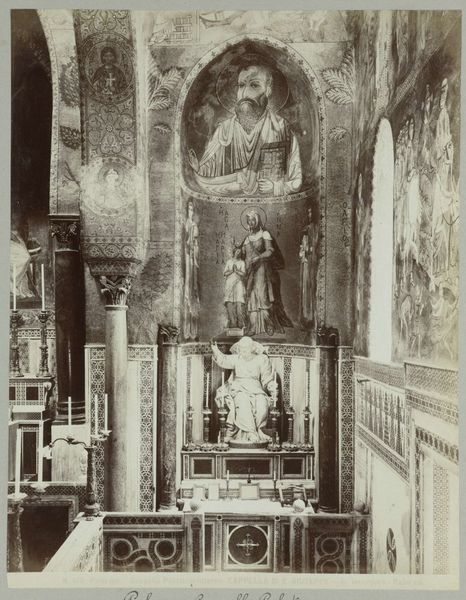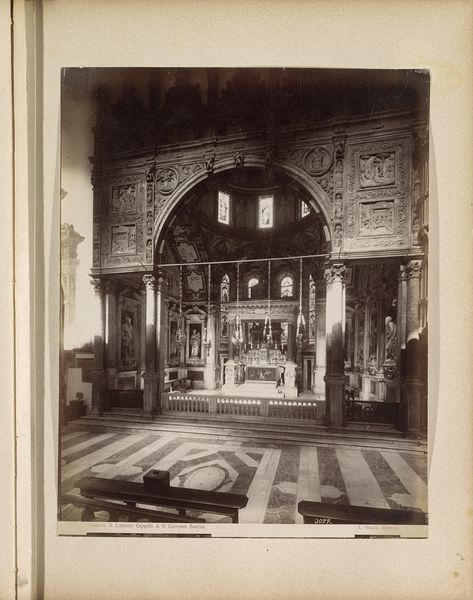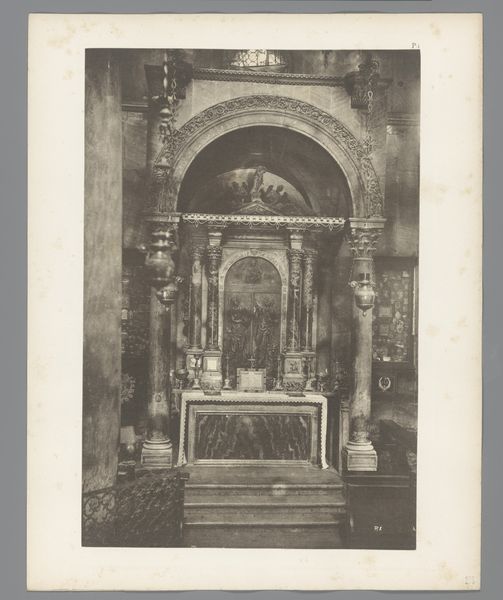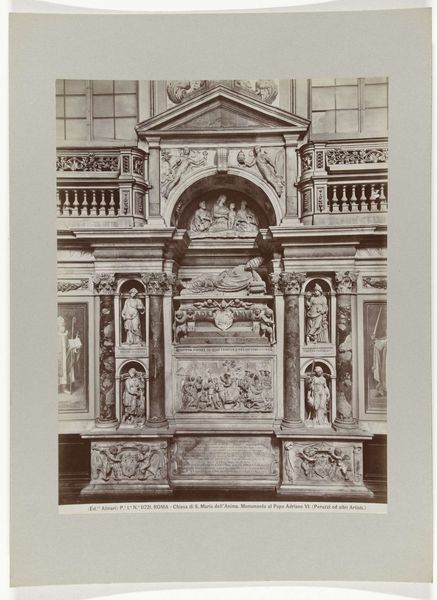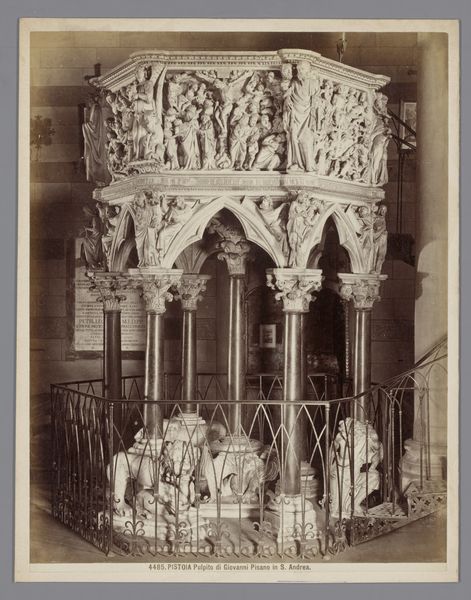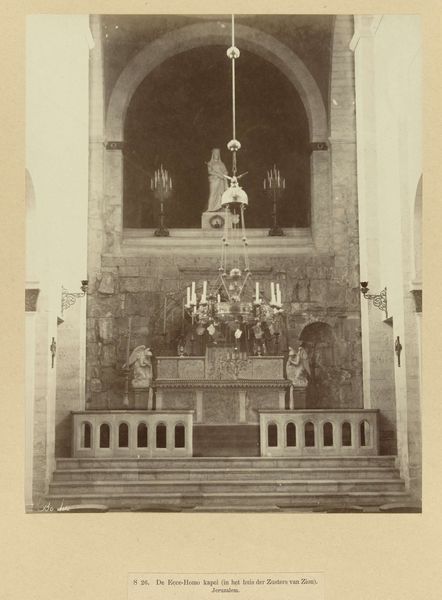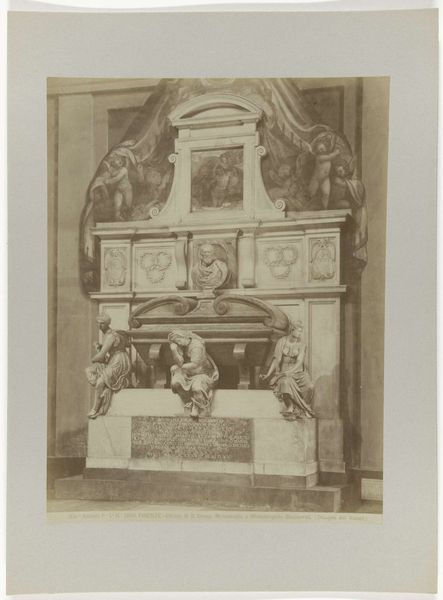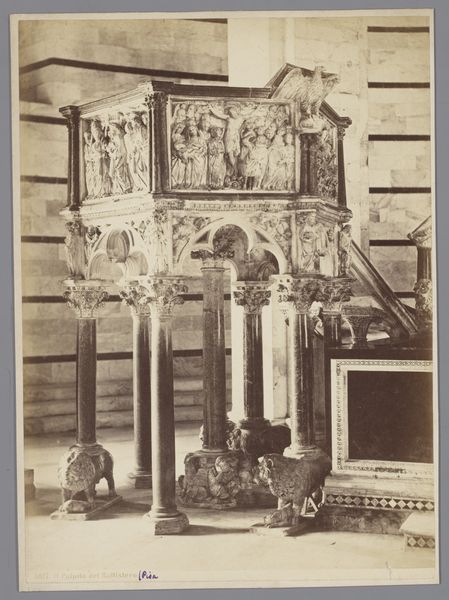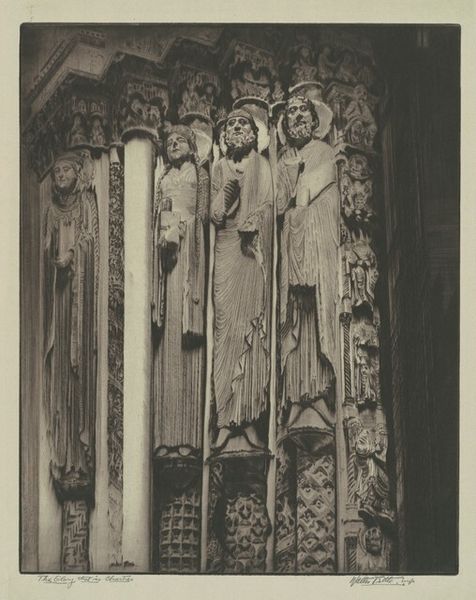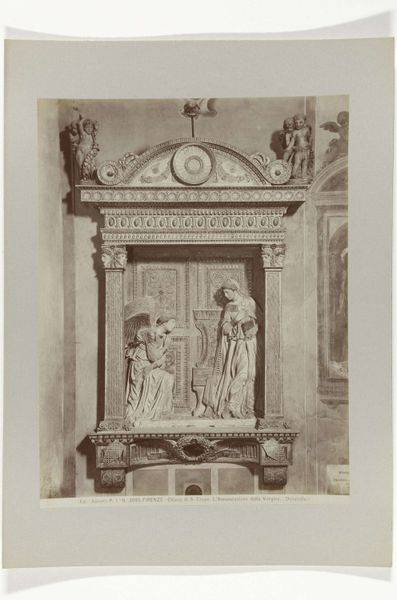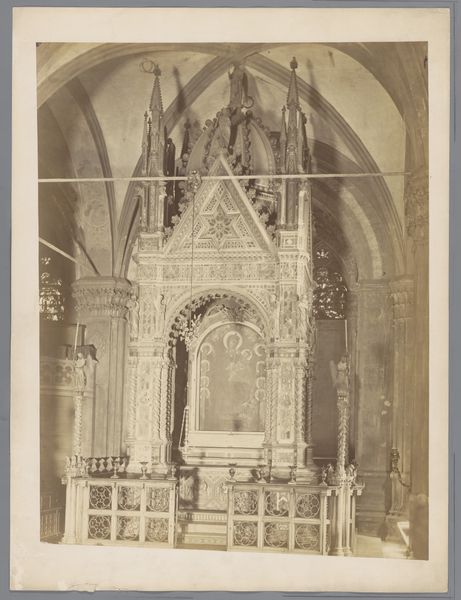
Grafmonument voor Pietro Mocenigo in de Santi Giovanni e Paolo Venetië, Italië 1870 - 1880
0:00
0:00
photography, sculpture, gelatin-silver-print
#
landscape
#
photography
#
sculpture
#
gelatin-silver-print
#
19th century
#
history-painting
#
academic-art
#
watercolor
Dimensions: height 353 mm, width 270 mm, height 422 mm, width 310 mm
Copyright: Rijks Museum: Open Domain
Curator: This evocative photograph by Carlo Naya, taken sometime between 1870 and 1880, captures the grave monument of Pietro Mocenigo in the Santi Giovanni e Paolo church in Venice. Editor: The photograph strikes me as somewhat theatrical. The strong verticals and the raking light really emphasize the monumentality and solemnity of the space. Curator: Absolutely. Naya’s mastery is apparent in how he captured this massive marble structure. We should remember that this is a gelatin-silver print, an albumen print really; the process itself involved significant labor and material cost at the time. The making of this print would be considered by many a significant artisanal undertaking. Editor: The subject of the image has an important cultural context. Pietro Mocenigo was a Doge of Venice, a figure of immense political and military power. This tomb, therefore, represents the culmination of his service to the state, serving both as a commemoration and a political statement. I'm curious to know how the placement of the sculptures played out in terms of 19th century academic style. Curator: You are right, looking closely at the architecture you can see the details rendered here speak to wealth and artisanal capacity, I’m sure it involved the collaboration of several studios specialized in monumental stone work and photography. The social and material implications are remarkable. Editor: Considering Naya's career, documenting Italian heritage, I see a connection between the production of photographs like this and the rise of cultural tourism. Disseminating images of Venice solidified the city as an artistic pilgrimage destination in the popular imagination. Curator: Agreed, but I would be willing to wager that without this record and images of these objects and architecture many elements of their materiality could have been lost forever. Editor: Indeed. Looking at this photograph helps us understand the layers of meaning embedded in Mocenigo's monument. Its construction, iconography, and documentation—it all says so much about Venice, about its culture and about history itself. Curator: Very true, understanding photography through its material construction provides us insight into that world, in all its social and political complexity, doesn't it?
Comments
No comments
Be the first to comment and join the conversation on the ultimate creative platform.
